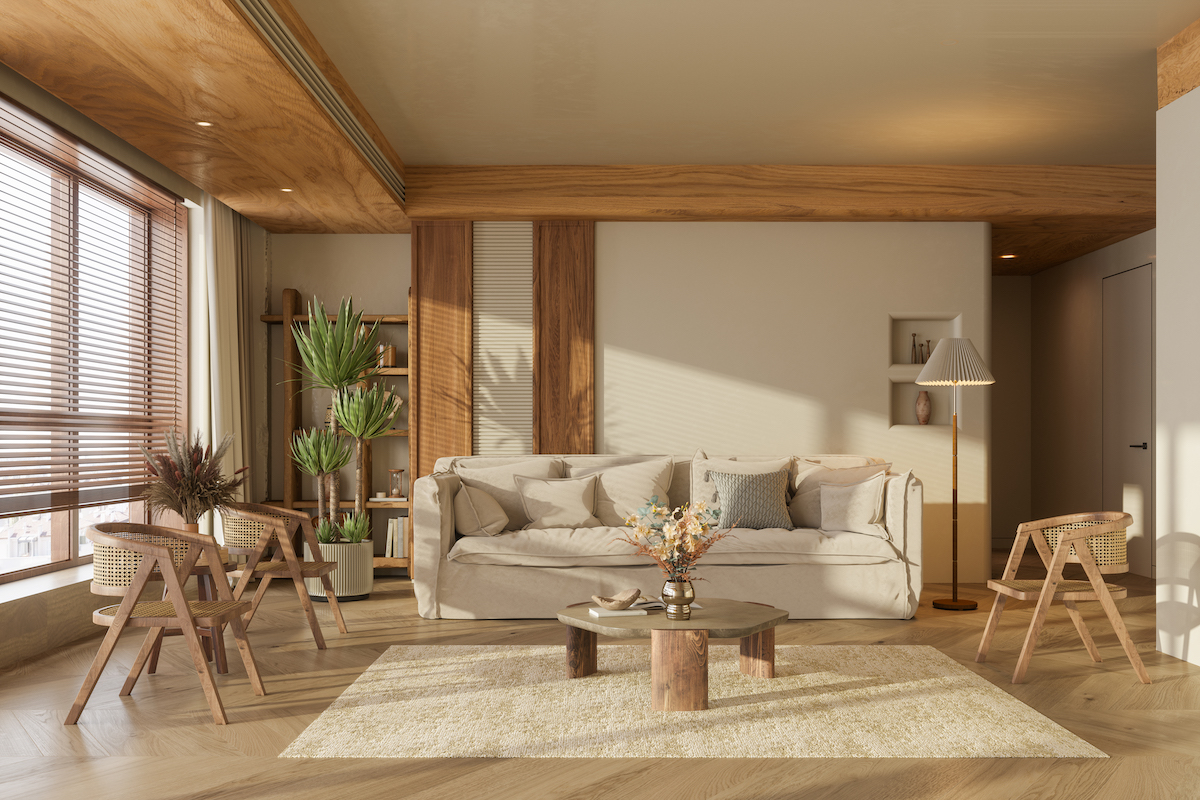We may earn revenue from the products available on this page and participate in affiliate programs. Learn More ›
Few design and decor trends capture the imagination quite like Japandi interior design. This unique style is a blend of Japanese and Scandinavian aesthetics, merging the minimalistic elegance of the East with the cozy warmth of the North. Japandi-style interior design offers a blend of tranquility, simplicity, and functionality. To better understand the essentials of Japandi style, its origins and philosophy are just as important as its calming color palettes and natural materials.
1. Japandi is a mix of modern Japanese and Scandinavian interior design styles.
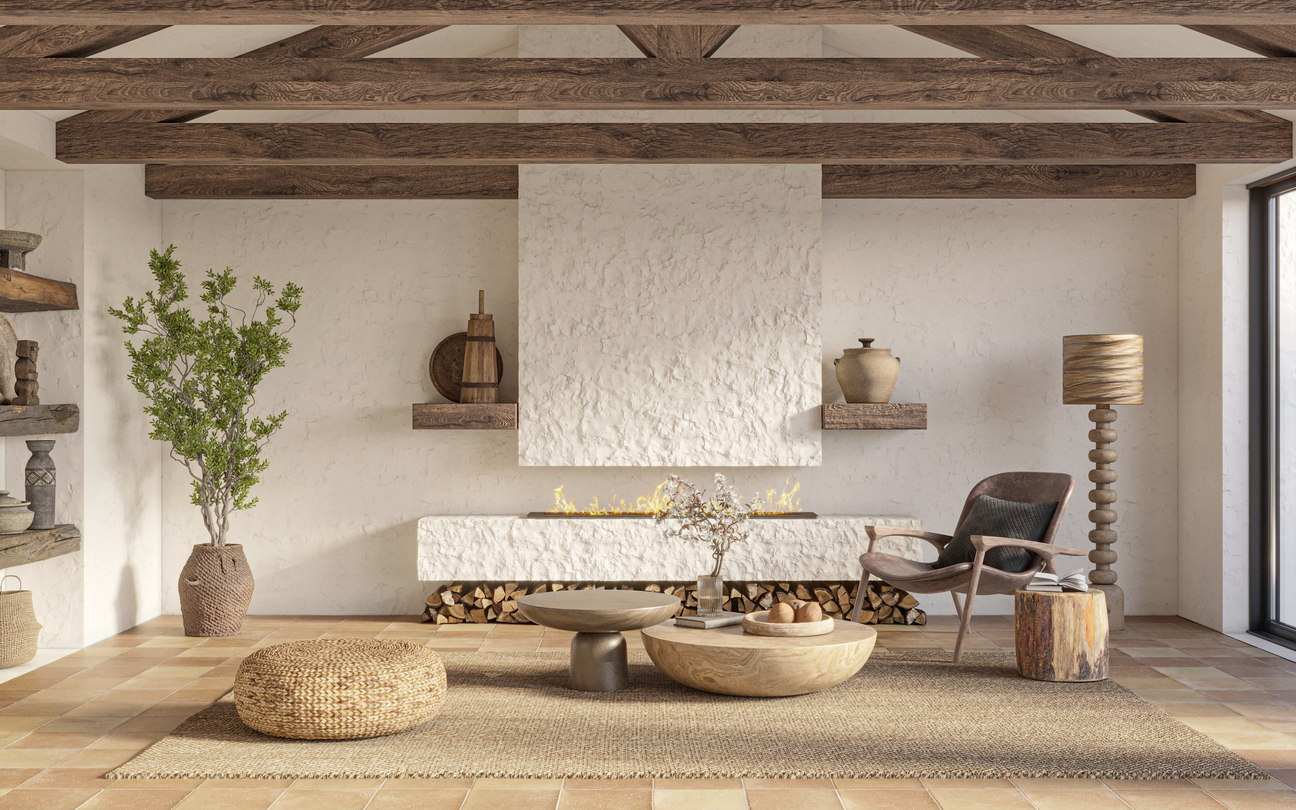
For much of the island nation’s history, Japan had a closed-border policy, making it difficult or impossible for foreigners to visit. In the 1850s, however, the borders reopened, and this allowed Scandinavian and other Westerners to experience Japanese culture and aesthetics for the first time. According to Mariya Snisar, head of interior design at Toronto-based home renovation firm Renowell, “This cultural exchange laid the foundation for the harmonious blend of Japanese minimalism and Scandinavian functionality that we now know as Japandi design.”
The Japanese Way’s Yuuna Morishita describes Japandi as “a fascinating blend of Japanese minimalism and Scandinavian functionality, like the perfect marriage of two cultures that, although distinct, share common principles—simplicity, cleanliness, and immense respect for the lived-in environment.”
Popular Japanese-inspired interior design is characterized by a(n):
- Strong connection to nature through the use of plants and natural elements.
- Emphasis on minimalism and functionality.
Scandinavian design, on the other hand, is known for its:
- Focus on comfort and coziness, including plush textiles and warm lighting.
- Muted color palettes.
2. The philosophies of wabi-sabi and hygge define Japandi style.
Beyond aesthetics, Japandi design roots itself in philosophies and principles from both cultures. As Morishita explains, “While the term ‘Japandi’ might be relatively new, the philosophies it embodies are not. Both Japanese and Scandinavian cultures have long-standing traditions of prioritizing functional living spaces that value simplicity and beauty.”
The Japanese philosophy of wabi-sabi celebrates the beauty of imperfection. In part, wabi-sabi encourages one to embrace the natural wear of items in their home, such as cracked ceramics or slightly faded wall art. In a somewhat similar vein, Denmark’s concept of hygge encapsulates the essence of coziness and the joy of life’s simple moments.
When combined as Japandi, these complementary ideologies promote domestic comfort, natural imperfection, and practical simplicity. These concepts extend beyond just Japandi furniture and decor, to an intersection in two ways of life. “The historical connection adds a rich depth of meaning to the style, highlighting the enduring impact of cross-cultural inspiration in the world of interior design,” Snisar says.
3. Natural materials are Japandi style fundamentals.
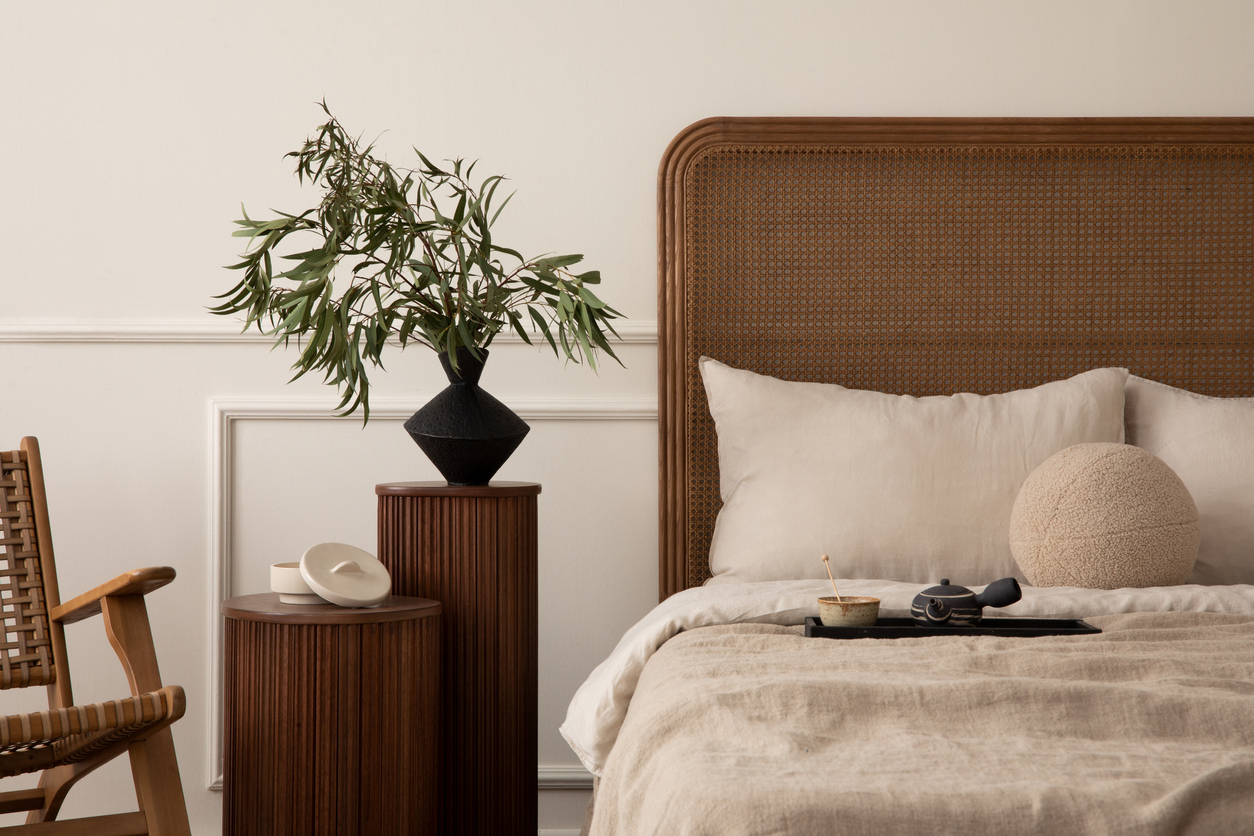
One of the cornerstones of Japandi design is the use of natural materials, which have deep roots in both Japanese and Scandinavian traditions. Wood, bamboo, stone, and linen will commonly be found in a Japandi house, and these materials bring a touch of nature indoors. For the same reason, houseplants and other greenery are also often incorporated into Japandi interiors. As Morishita details, “Bringing in a little bit of nature, like bonsai or succulents, complements the natural materials and adds a touch of life to the setting.”
“Japanese and Scandinavian designs advocate for less clutter and more functionality, which is why every piece in a Japandi-styled room should serve a purpose.”
—Yuuna Morishita, The Japanese Way
4. Neutral colors are equally important to Japandi design.
A Japandi color palette will largely be made up of neutral shades. In terms of which colors are typically used, Morishita says, “We often see shades of gray, beige, and off-white coupled with deeper natural hues.” This subtle palette enhances the serene ambiance, lending spaces like Japandi bedrooms or living rooms a clean, tranquil atmosphere.
The neutral tones used in Japandi design should be chosen based on their ability to evoke a sense of calm and balance. They act as a blank canvas, allowing you to highlight a few carefully chosen pieces of furniture or decor items that will stand out against the muted background. This color palette also makes interiors seem larger and more open.
While the base of the Japandi color palette is neutral, occasional pops of earthy colors, like deep greens, burnt oranges, and dark blues, can be used to add warmth and depth to the space. These accent colors are also typically inspired by nature, and they further emphasize the connection to the natural world so integral to Japandi style.
5. Japandi interiors are open with clean lines.
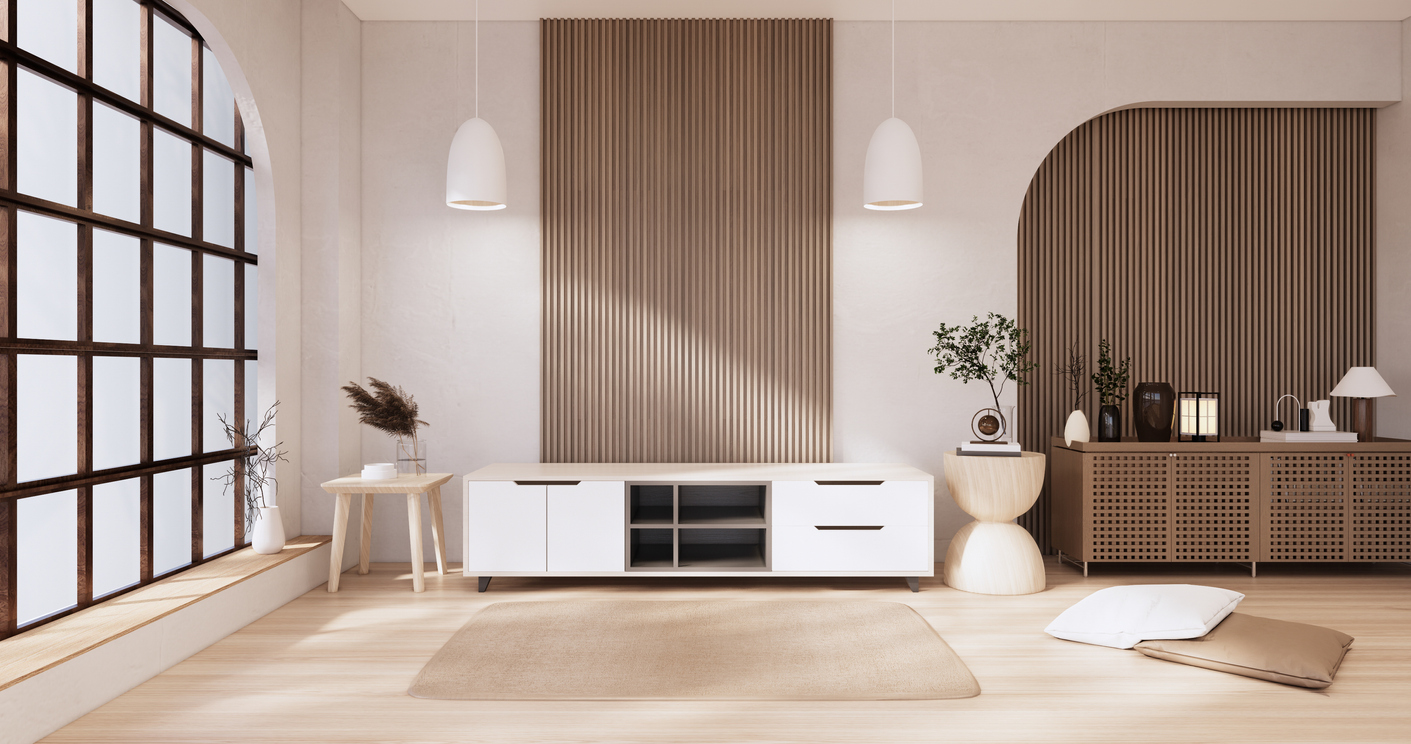
Openness and fluidity are Japandi design hallmarks. The focus should be on clean, straight lines and unobstructed spaces. “To truly embrace the Japandi design, embrace the concept of ‘ma’, which refers to the thoughtful use of space,” says Snisar, further explaining, “This involves creating a sense of openness and flow within the design, for a seamless transition between different areas of your room.”
6. Natural light accentuates simple decor and contrasting colors.
Light plays a pivotal role in Japandi interiors. If your home’s architecture allows, keep south-facing windows or doors open to let ample natural light to illuminate the Japandi color palette’s contrasting hues. The play of light and shadow on minimalistic Japandi decor items—be it a vase or a piece of Japandi wall art—creates a dynamic yet harmonious effect.
7. Japandi spaces lack clutter.
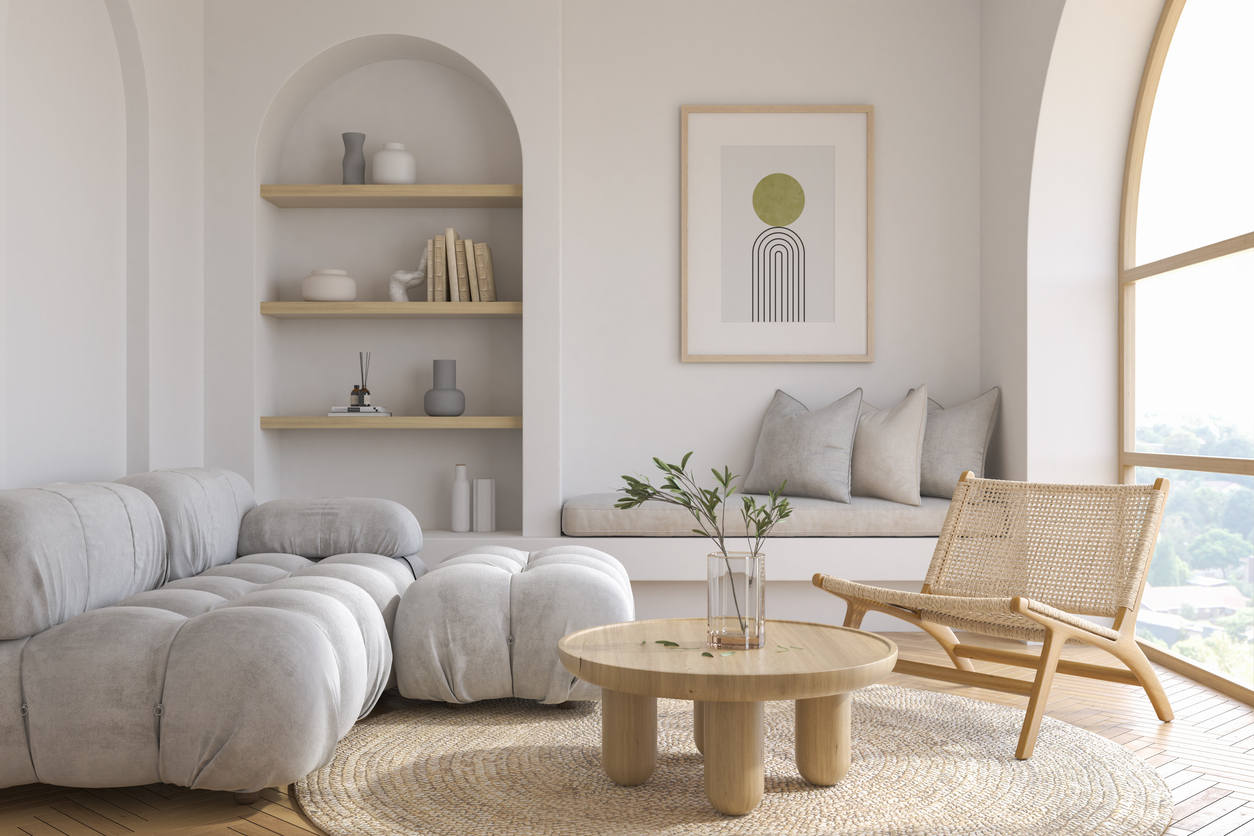
At its core, Japandi-style interior design is about intentional living. Rooms should generally be free of unnecessary items to embrace the “less is more” philosophy of minimalism. In a Japandi interior designed living room or kitchen, most (if not all) items have a purpose, and there’s a purposeful place for everything. Morishita states, “Japanese and Scandinavian designs advocate for less clutter and more functionality, which is why every piece in a Japandi-styled room should serve a purpose.” This decluttered approach is not only aesthetically pleasing, but also more stress-free and practical for everyday living.

